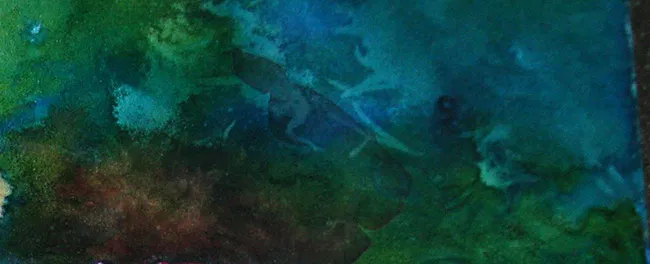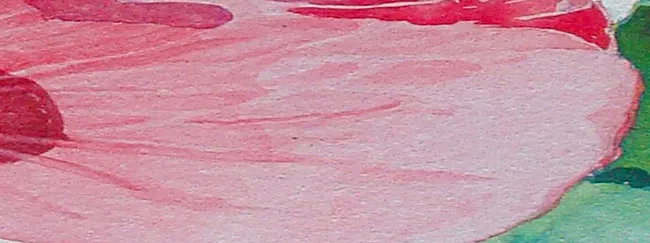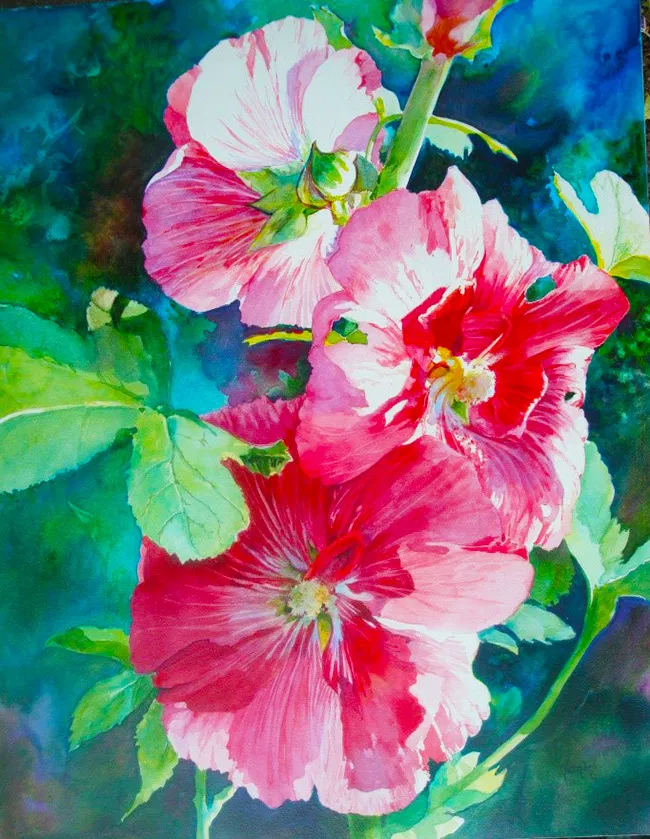Tips and Tricks for Getting the Perfect Watercolour Effects on Aquabord
July 2, 2021
Aquabord offers the artist the ability to do more on the surface and to create effects more easily than on other traditional surfaces. Aquabord is an archival panel with a unique clay coating which includes a tiny mineral that helps to dissipate the water and pigment throughout the painting. It can be used for other media as well but is very absorbent and is designed to work with water media.
You can create soft flows of colors on Aquabord as is done on traditional paper surfaces. Aquabord also allows glazing (the stacking of colors, damp or wet paint laid on top of dry paint) without disturbing the underlying layers. Unlike other products on the market that only allow one quick color placement because a second would disturb the first, Aquabord helps the painter generate more brilliant, luminous colors by allowing colors to be glazed one layer on top of another. The smother surface offers a greater reflection of the pigment that sits nearer the surface. On paper the pigment drops down into the lint of the cotton and dulls down.
Aquabord responds to a “damp-into-damp” process. Water can be placed on the surface in a very wet, splashy manner. If the paint is applied in this wet and juicy manner, the color will tend to marbleize throughout the water and dry in irregular flows. If you allow the water to drop into the surface, dry a bit, and become damp before applying paint, the colors will flow more slowly across the surface creating a smoother, soft wash appearance. Remember that color will move naturally as long as it is offered water in which to move.
Wet into Damp (less flow)

Wet into Wet (more flow and more marbleizing)


Color, when placed on a dry surface is static, unable to move, and will offer a flat layer of color.
Blooms (the back washing of color on the surface) in watercolors can cause obtrusive marks on the surface. A “bloom” is the result of the brush having more water in it than the surface has on it. When the wetter brush touches the less wet surface, the water on the brush is quickly wicked onto the surface, flooding and flushing the area. The flow of water pushes the pigment out and makes a circular mark lighter in the center with an edge of darker pigment. On paper, the edge of the bloom can stain the paper and create problems, even showing through additional layers and creating an awkward texture. These, however, can be an interesting effect when wanted. Look at the works of Joseph Rafrael (https://josephraffael.com/).

To master this, practice making sure that your brush is not as wet as the surface on which you are painting. On Aquabord, if you create a bloom, allow the surface to dry. Then simply glaze a color over it or just pull a wet brush across the bloom. It will dissolve, leaving no mark on the surface. Problem solved!

The bloom was glazed with a thin layer of the same color. The bloom dissolved and is now gone.
I like using a Mop or Cat’s Tongue type brush when applying washes and glazes. Brushes that include natural bristles work best on Aquabord since they offer less resistance against the surface. I really like the featured brush below because of its sharp point and long edge, perfect for laying in washes and cutting in around edges.
Aquabord , unlike other surfaces, allows the artist to lift back to layers below and even to white. You will find that the most staining colors can be lifted back to white.

Unlike paper, that becomes permanently colored when washed with staining colors. (These are generally the most transparent colors such as Phthalo Blue, Phthalo Green, Permanent Alizarin Crimson and others.) Aquabord solves the problem when reversing colors. The artist can choose to lift gently down through layers, doing a partial lift.
Then the lift can be left as it is or when completely dry (hard dry), it can be glazed for a tonal effect.

I use a nylon shader for lifting. I use the edge, the corners and the flat of the brush. Because of the nylon, the brush allows for partial lifts as well as full lifts. Bristle brushes work when you really want to scrub the surface but the nylon is more suitable for gentle lifting. The brush was designed for gentle resistance on the surface.
Upon completion, I seal the painting with, first, Krylon UV Varnish (a spray) followed by Golden Acrylic’s Polymer Varnish with UVLS (a brush on varnish). Complete instructions are on Ampersand’s website. No glass is required for presentation; there is no more glare to disrupt the image; and everything is totally archival and museum quality!

A key factor when glazing on Aquabord is to allow the layers to dry completely. If the lower layers of color are damp, they will move, even the most staining colors. So get the hair dryer out, especially if you live in a high humidity region of the country. Stacking and glazing color will give you greater intensity and values.
“Pink Hollyhock” by Karen Vernon 16 x 20 Watercolor on Ampersand Aquabord, by Karen Vernon

Written by Karen Vernon
Karen Vernon has worked in watercolor for over fifty years and has taught workshops throughout the United States, Europe and Canada for more than 30 years. Her paintings have earned notable awards and developed a worldwide market. They currently hang in museum and corporate collections in Europe, the United States and throughout the world. She is a member of Who’s Who in American Art and Who’s Who in America and holds signature memberships in several prestigious art societies. She is the founder of ACT, Artist Changing Tomorrow, and was one of fifty recognized artists selected to be a part of the national museum touring exhibition, “Sea to Shining Sea.”
Vernon has expanded her career focus and is now working in pastels and oils as well as watercolor. As well as being an active, producing artist, Vernon has been a noted jurist for exhibitions for 3 decades. Vernon and her husband, Ken Muenzenmayer, currently, are the owners of The Gallery at Round Top and Comforts, and each continue to teach art business and painting workshops across the nation.
